Iron vs Wedge Set-up... What are the differences at address?
In this Iron vs Wedge Set-up... What are the differences at address article, PGA pro Alex Elliott explains the keys every golfer needs to know

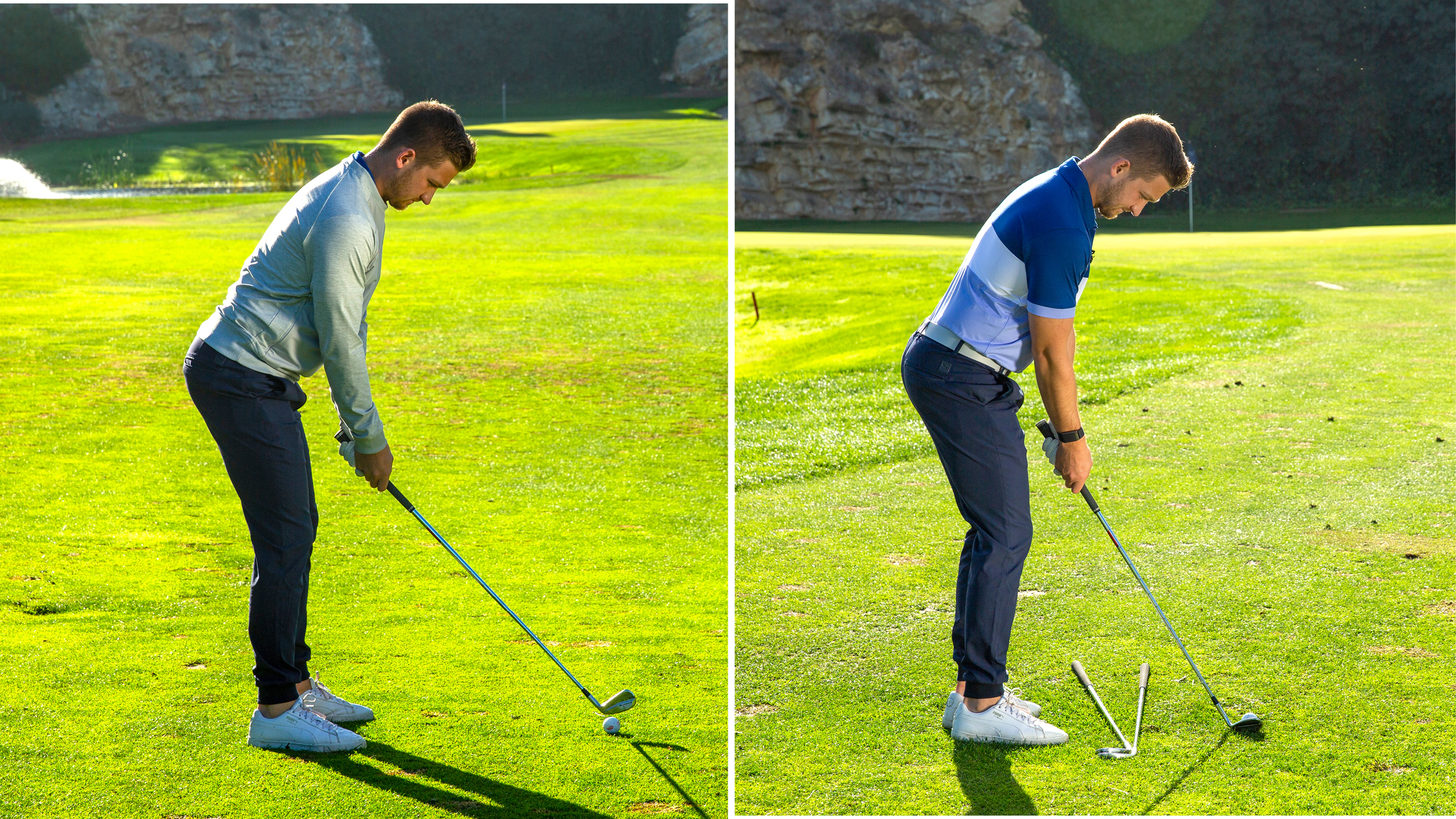
If you set up to a pitch shot like you do to a full iron shot - and vice versa - your chances of hitting it close or even finding the green lessen. In the video and article below, Golf Monthly Top 50 Coach and PGA pro Alex Elliott explains the key changes you need to make...
Iron vs Wedge Set-up Explained
Making some subtle tweaks between how you address an iron shot and a pitch shot is vital to strike the ball consistently well. First up, the full iron shot.
In the video above, I'm faced with around 160 yards to the flag and there is water left and a bunker right, so it's imperative I'm aiming correctly. For a full swing shot like this, you want to get your feet, knees, hips, and shoulders running parallel to your ball-to-target line. In other words, imagine there's a line from your ball to the target and try to get your feet, knees, hips, and shoulders parallel to that line. For a right-hander, that means your body will be aiming slightly left of target and vice versa for lefties. A good way to picture it is to imagine you are standing on a train track.
It's important not to fall into the trap of aiming your body at the target as that will mean the club is pointing right and you'll have to make a compensation in your swing.
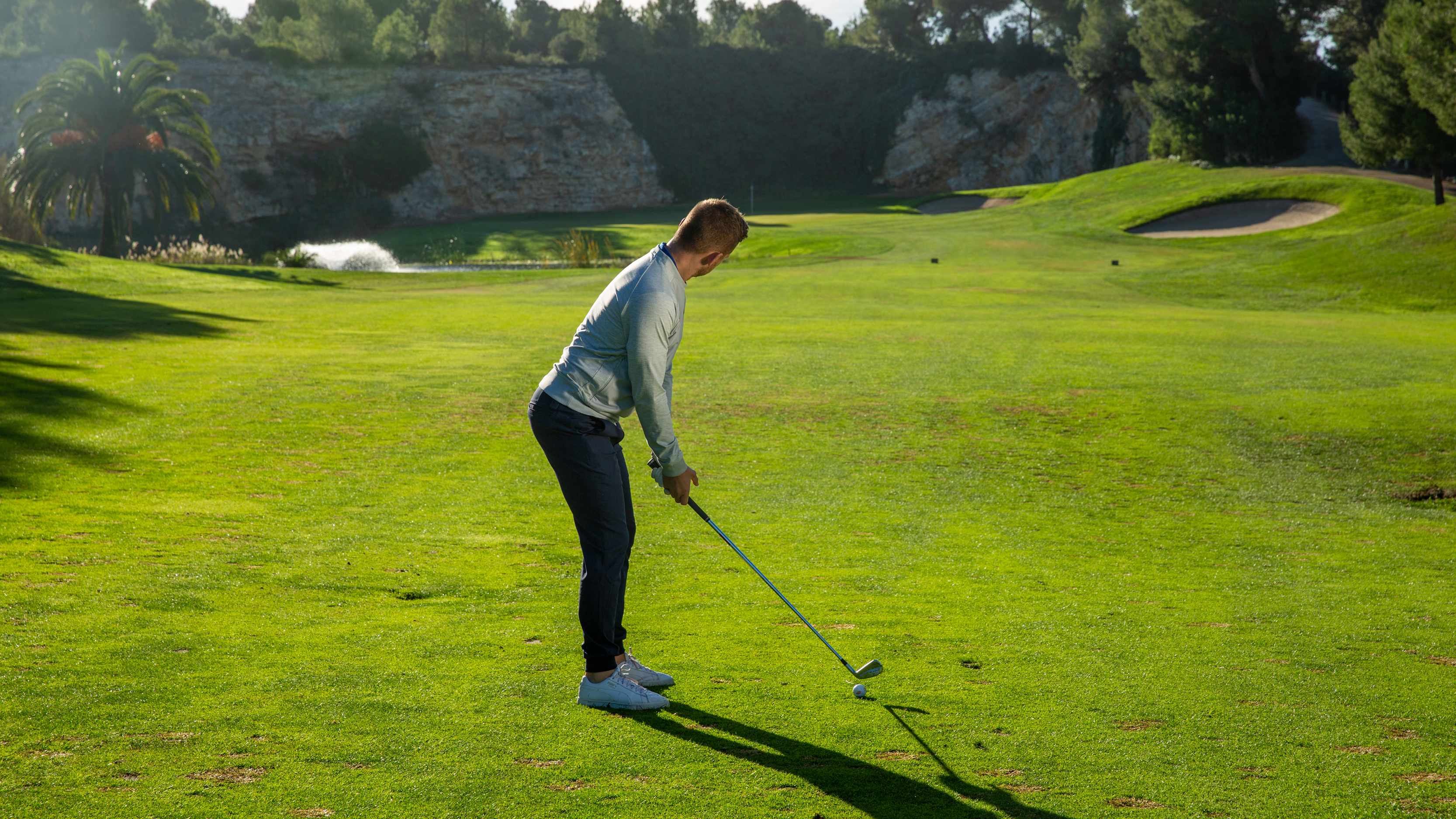
Aim to get your feet, knees, hips, and shoulders running parallel to your ball-to-target line
Moving onto pitch shots, which are often vital for maintaining momentum in a round. Yet I often see amateurs setting up incorrectly - often because they fail to full understand the differences between pitching and chipping.
Firstly, your stance should be narrower than a normal iron shot. Aim for roughly the width of two or three clubheads.
As for the body alignment, here's a really simple drill. Put a club or an alignment stick on the ground running parallel to your ball-to-target line. Now put another one down that points further left as in the phot below. I want you to line your feet and hips up using that alignment aid so they are aiming left of your shoulders and the club.
Subscribe to the Golf Monthly newsletter to stay up to date with all the latest tour news, equipment news, reviews, head-to-heads and buyer’s guides from our team of experienced experts.
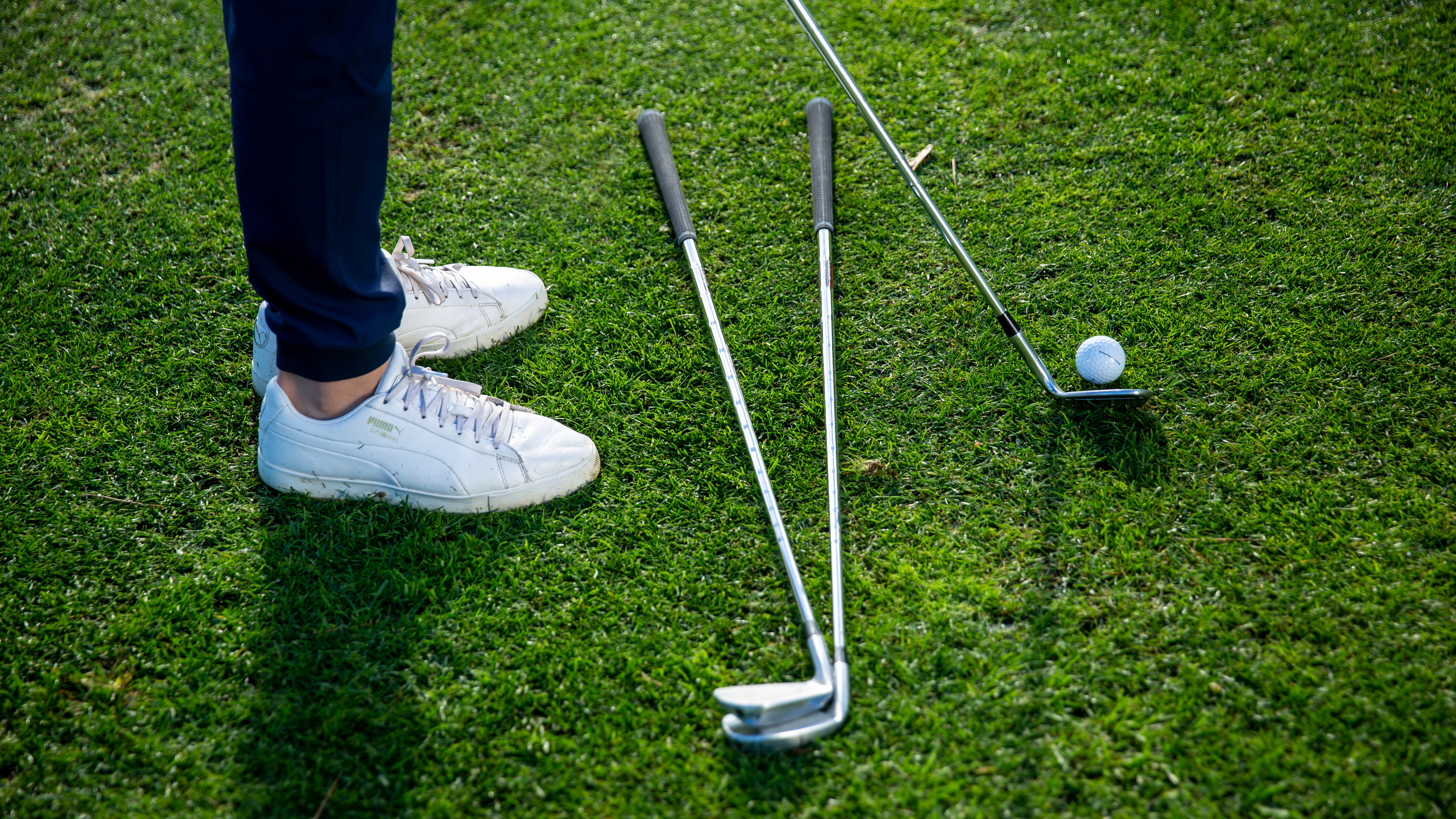
Narrow your stance and open up your lower body using this pitching set-up drill
The reason for this is because it's hard to open up and transfer your weight with everything square over such a short distance. Opening up your lower half will really help you get through the shot and control your strike.
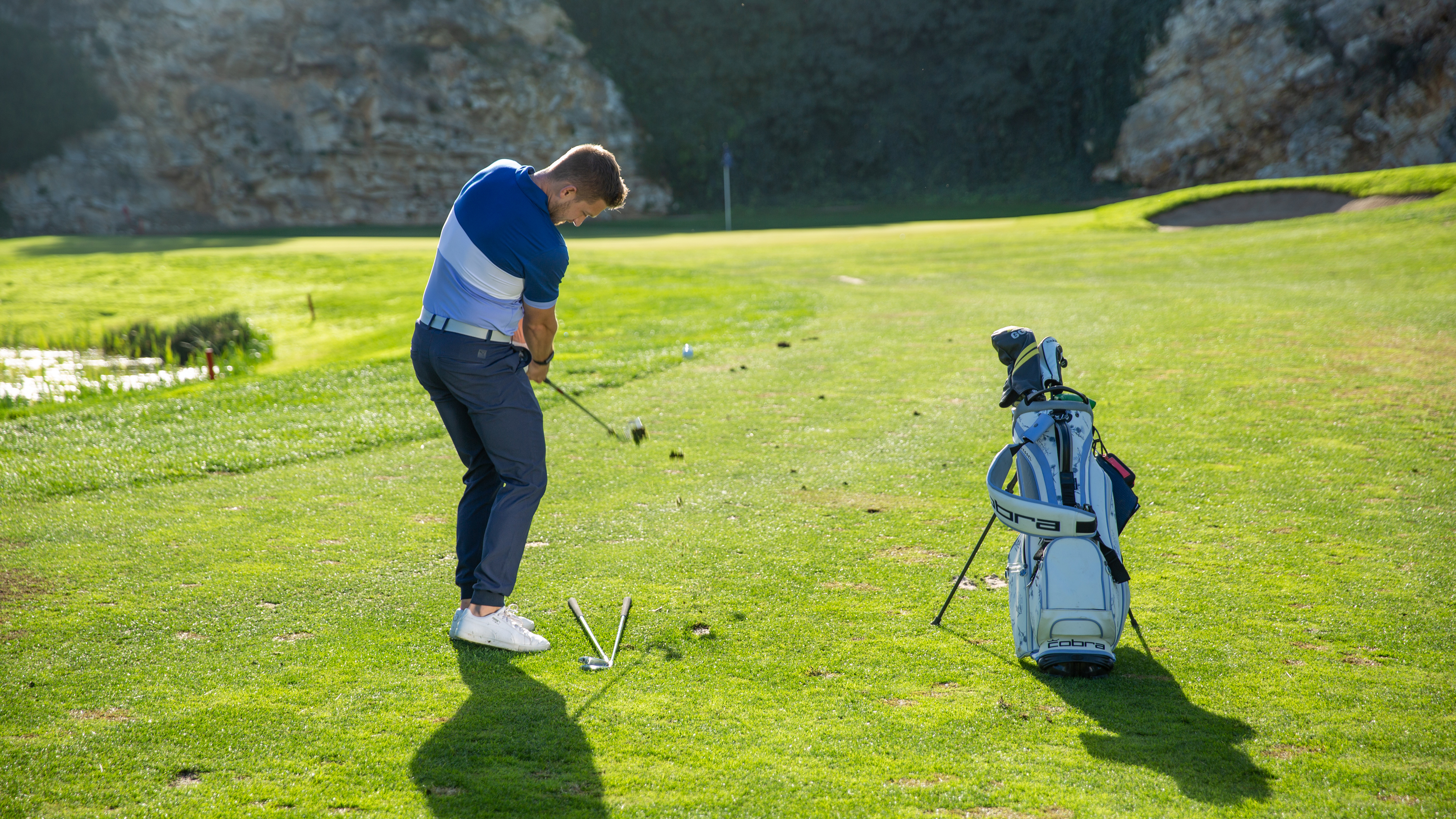
Opening up your lower body will help you strike the ball better more often
When practising, start by setting up with everything parallel to your target line and then shift your lower half left. Now all you have to do is keep your weight on your left side and rotate back and through to hit your pitch shots nice and crisply.
As long as you have the perfect ball position for every club, you should be able to hit both irons and wedges well. Give this a go and see how you get on!
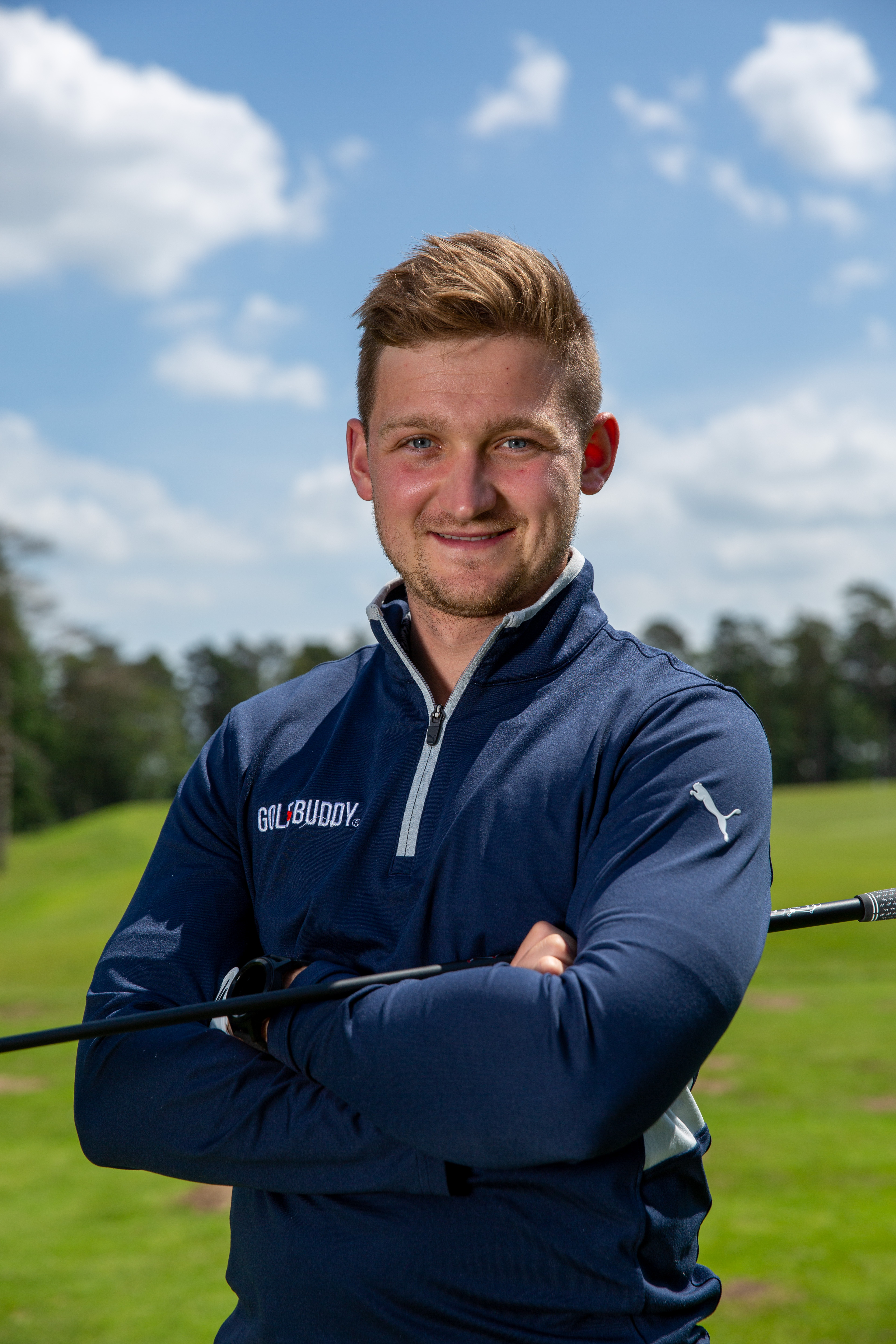
Location: Mottram Hall
Alex spent a great deal of time learning the game from fellow northwest golfer, Andrew Murray, who was a European Tour regular from 1979 to 1995. He spent three years on the European Tour caddying for Andrew’s son, Tom, before taking his PGA qualifications. His passion for the game and personality in front of the camera has helped him to create a thriving social media platform on Instagram and YouTube, where he offers a whole host of tips and advice to help viewers shoot lower scores.
Most significant influences on your teaching:
Mike Bender's book, 'Build The Swing Of A Lifetime', which I read during my PGA qualifications. He uses so many different tools to help students deliver the club better when hitting the golf ball. Andrew Murray, too. He helped form the way I interact with golfers and simplified what can be a complex game for a club golfer.
Advice for practice:
I like to get students to work in sets of five golf balls – three drills shots to two course shots. The drill shots have no consequence, but with the two course shots, I ask the student to create a green or fairway and go through a full routine.
Greatest success story:
One of my students hadn’t played golf for ten years - he'd lost his love for the game. After watching my online Instagram and YouTube content, he came for several golf lessons and has now joined a local golf club. Knowing I've helped get someone back into golf... you can't beat that.